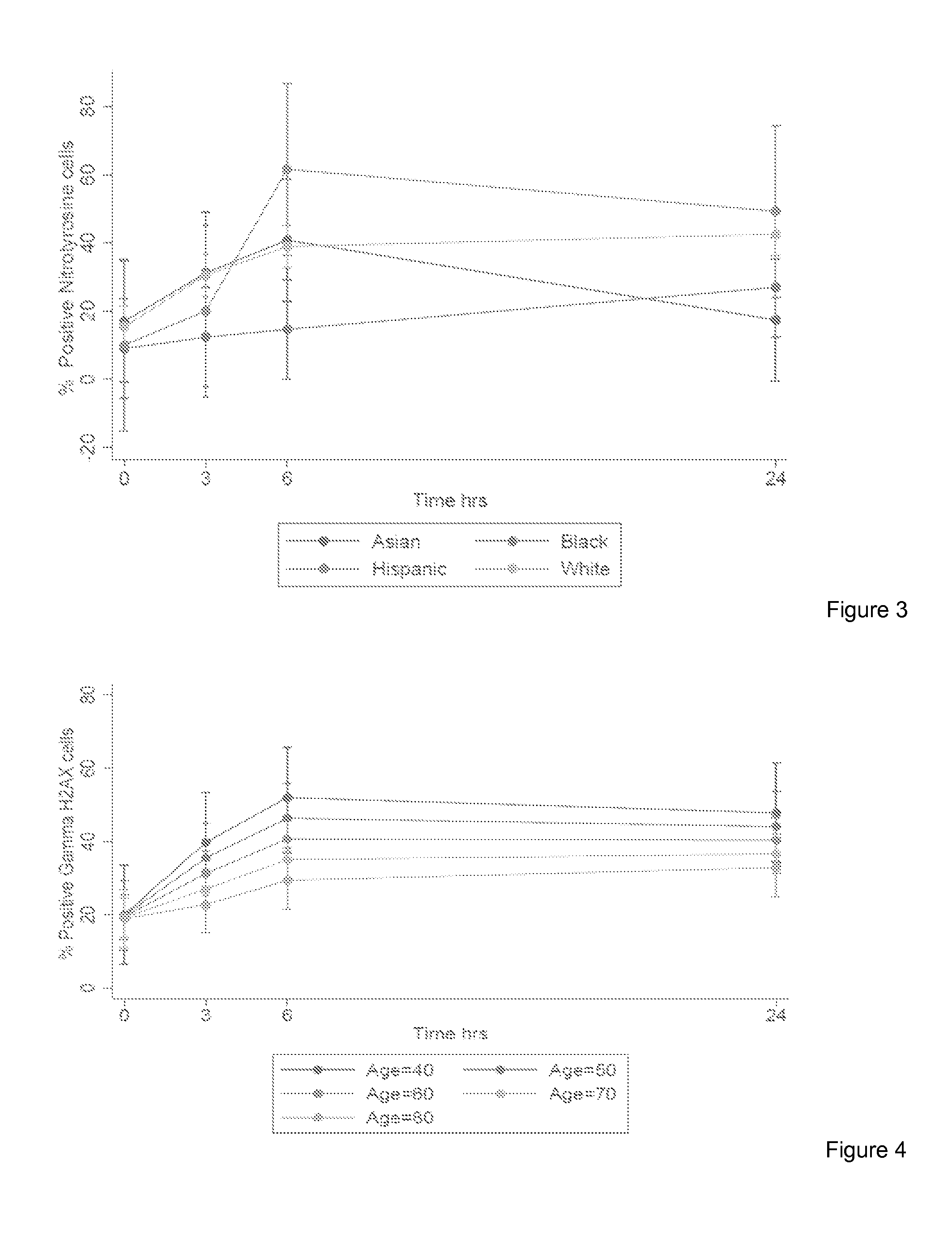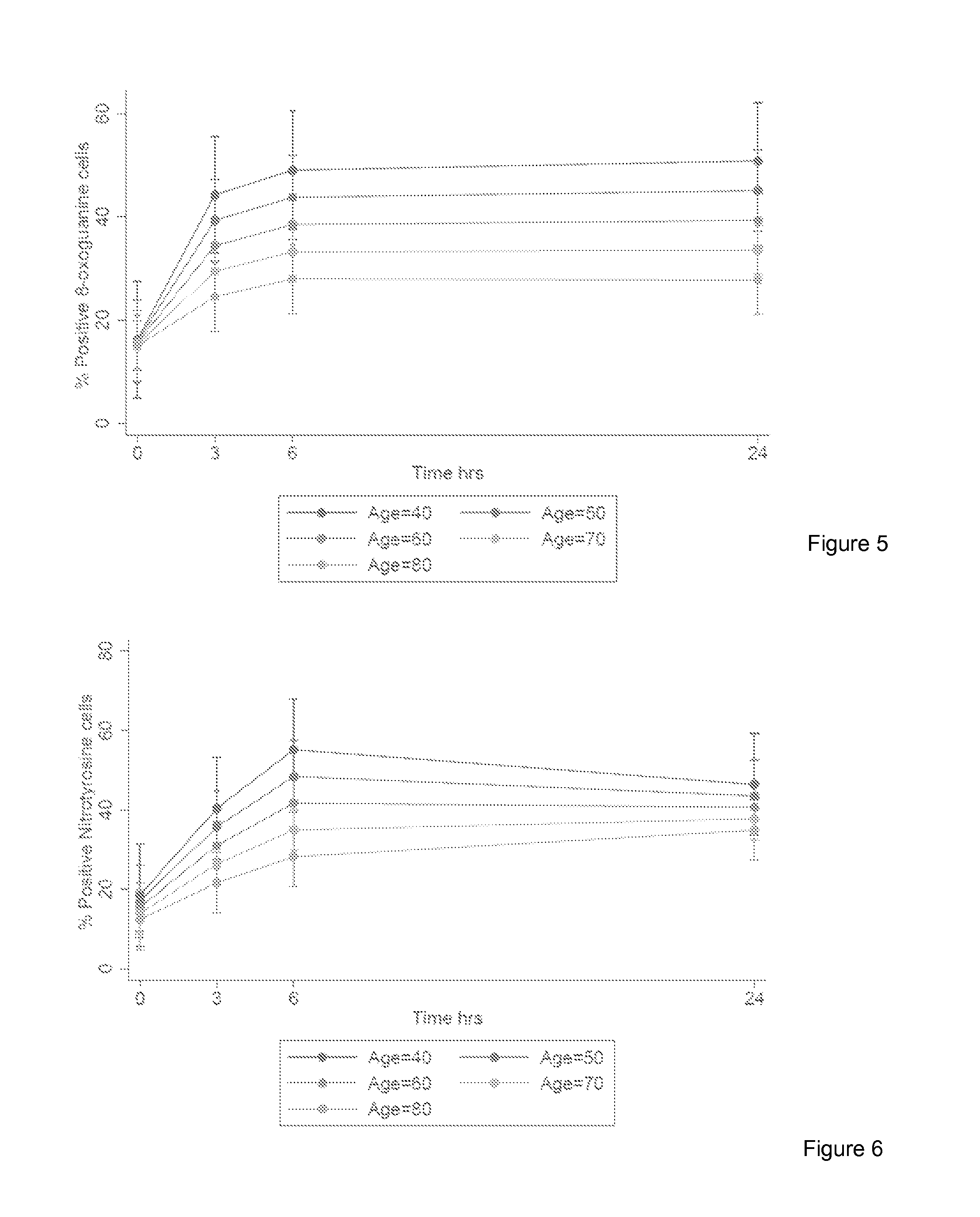Blood markers for lung cancer predisposition
a blood marker and lung cancer technology, applied in the field of lung cancer detection, diagnosis and monitoring, can solve the problems of not well understood why some individuals are more susceptible to smoking-induced lung cancer, few phenotypic tools available, and further perplexing
- Summary
- Abstract
- Description
- Claims
- Application Information
AI Technical Summary
Benefits of technology
Problems solved by technology
Method used
Image
Examples
example 1
Blood Test for Lung Cancer Predisposition
[0042]This example demonstrates phenotypic tools to assess if individuals are more susceptible to cigarette smoke extract induced genotoxicity. To further strengthen our analysis, we combined our data with the known characteristics of confounding diseases, age, race, sex, family history of cancer, and other environmental exposures in each individual. In spite of our very small sample size we found statistically significant results correlating age and race to susceptibility to develop DNA damage and lung cancer difference to non-lung cancer, especially in the 40 and 50 year old patient group, as well as positive yet non-significant trends in gender, family history of cancer, pack years of cigarettes smoked, and individuals with history of other cancers. Thus, markers of genotoxicity detected in peripheral blood serve as markers for detection of predisposition to lung cancer.
[0043]Materials and Methods
[0044]Inclusion / Exclusion Criteria.
[0045]In...
PUM
 Login to View More
Login to View More Abstract
Description
Claims
Application Information
 Login to View More
Login to View More - R&D Engineer
- R&D Manager
- IP Professional
- Industry Leading Data Capabilities
- Powerful AI technology
- Patent DNA Extraction
Browse by: Latest US Patents, China's latest patents, Technical Efficacy Thesaurus, Application Domain, Technology Topic, Popular Technical Reports.
© 2024 PatSnap. All rights reserved.Legal|Privacy policy|Modern Slavery Act Transparency Statement|Sitemap|About US| Contact US: help@patsnap.com










